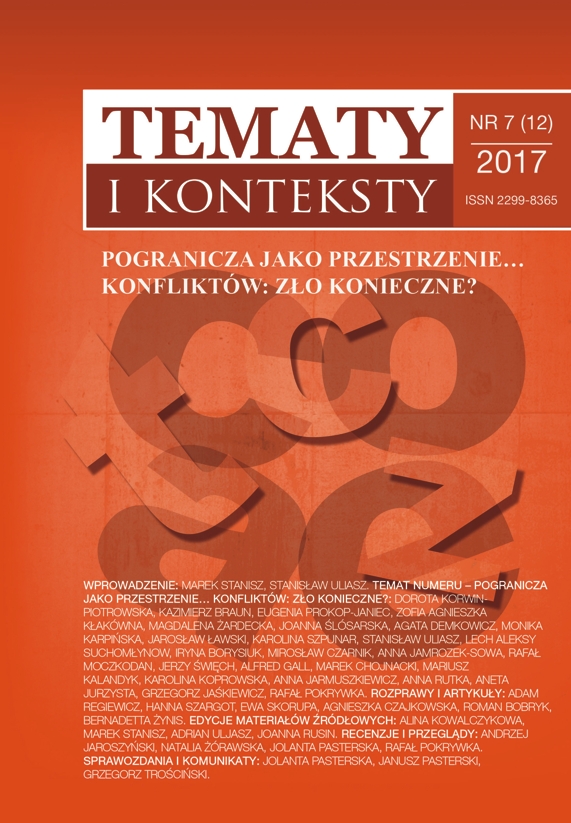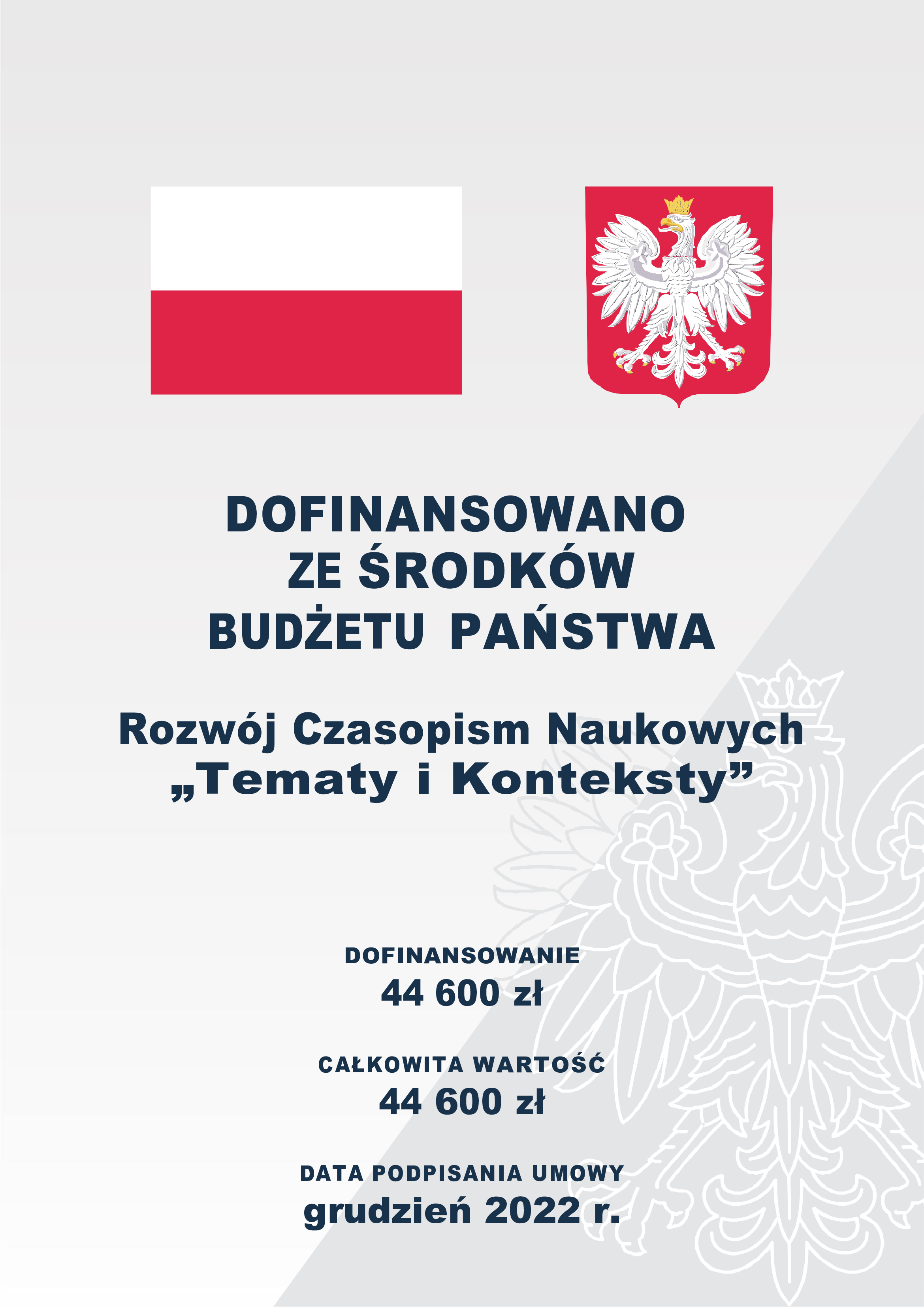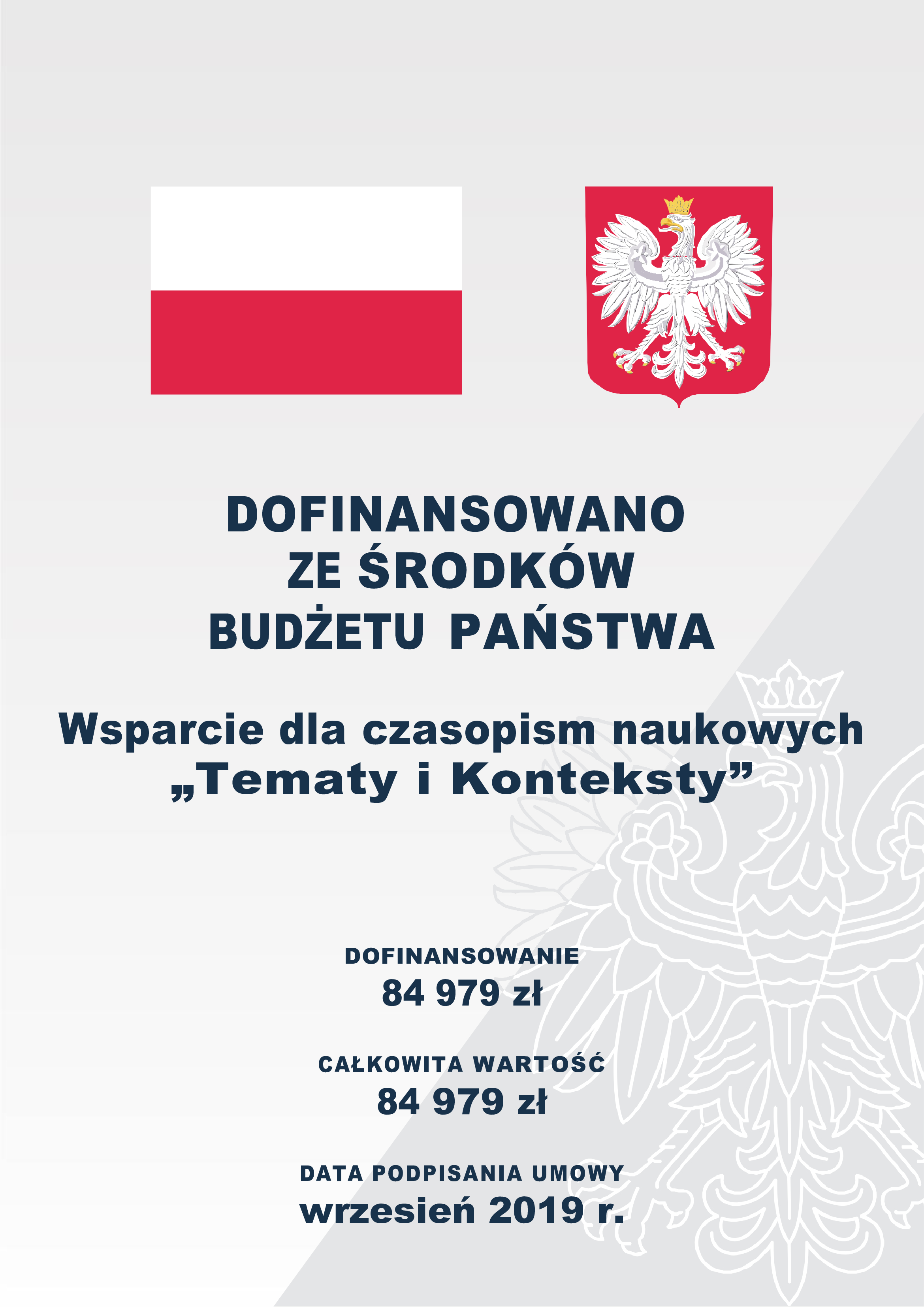Romantyzm poza wektorem „wpływu”. Model amerykańsko-polskiego rezonansu kulturowego
DOI:
https://doi.org/10.15584/tik.2017.10Słowa kluczowe:
kultura polska i amerykańska, romantyzm, wpływ, model kulturowego rezonansu, cyrkulacji i transmisji, wolnośćAbstrakt
The author of the article considers Polish-American literary and cultural relations from the 18th century to the times of romanticism. He notices that those relations fall into the model impossible to describe by the traditional models using the category of “influence” [Harald Bloom] or postcolonial dependence. The basis for American-Polish relations is the idea of freedom, fight for freedom and even a peculiar cult of freedom of both nations. The personifications of this common relation are the heroes of fight for freedom of Poland and the United States, namely Kazimierz Pułaski and Tadeusz Kościuszko. As the author notices studies on these relations lead to the conclusion that apart from dependence relations between historical and cultural phenomena in intercultural relations others may be observed. Thus, I describe American-Polish relations as a realization of a certain model called „the model of resonance, circulation and transmission” of values, patterns, common ideas. As the researcher indicates the model of this type also shapes postromantic relations between the United States and Polish culture, which may also be observed on the basis of studies on reception of such writers as James F. Cooper, August Antoni Jakubowski, Margaret Fuller, Ralph Waldo Emerson, Henryk Sienkiewicz, Karol Wojtyła, Czesław Miłosz.
Downloads
Bibliografia
Bąk M., Twórczy lęk Słowackiego. Antagonizm wieszczów po latach, Katowice 2013.
Bloom H., Lęk przed wpływem. Teoria poezji, przekł. A. Bielik-Robson, M. Szuster, Kraków 2002;
Bujnicki T., Step Sienkiewiczowski z „Marią” w tle, w: Antoniemu Malczewskiemu w 170 rocznicę pierwszej edycji „Marii”. Materiały sesji naukowej Białystok 5–7 V 1995, red. H. Krukowska, Białystok 1997.
Grudzińska-Gross I., Miłosz i Brodski. Pole magnetyczne, wstęp T. Venclova, Kraków 2007.
Jakubowski A. A., Wspomnienia polskigo wyganańca / The Remembrances of a Polish Exile, wydanie polsko-angielskie, przekł. i wstęp J. Ławski, P. Oczko, Białystok 2013.
Kalinowski W., Hypnos fiction. Nowelistyka Stefan Grabińskiego, Białystok 2016.
Kołos A., Indianie wyobrażeni w polskim piśmiennictwie XIX wieku. Między paradygmatem romantycznym a pozytywistyczną ideą postępu, w: Od Syberii po Amerykę. Geografia wyobrażona polskich romantyków, red. A. Kołos, T. Ewertowski, K. Szmid, Poznań 2013.
Kopij-Wiess M., Über Imitation zur Kreation. Zur Geschichte des deutsch-polnischen roman-tischen Kulturtransfers, Leipzig 2011.
Mehren J. von, Minerva and the Muse. A Live of Margaret Fuller, University of Massachusetts Press 1995; J. Matteson, The Lives of Margaret Fuller, New York – London 2012
Modzelewska E., August Antoni Jakubowski – poeta rozpaczy. Życie i twórczość, Kraków 2015.
Phillips U., Apocalyptic Feminism. Adam Mickiewicz and Margaret Fuller, „Slavonic and East European Review”, nr 87 [1].
Powidaj L., Polacy i Indianie, w: Publicystyka okresu pozytywizmu 1860–1900. Antologia, oprac. S. Fita, Warszawa 2002.
Pyzik T., Ralph Waldo Emerson i [Sarah] Margaret Fuller o dramacie, teatrze i krytyce literackiej, „Ekonomia i Humanistyka” 2002, Vol. III.
Sandler S., Indiańska przygoda Henryka Sienkiewicza, Warszawa 1967.
Siwicka D., Zapytaj Mickiewicza, Gdańsk 2007.
Wardziński Z., English Publications of Polish Exiles in the United States: 1808–1897, „The Polish Review” 1995, Vol. XV, No. 4.
Wellisz L., The friendship of Margaret Fuller d’Ossoli and Adam Mickiewicz, New York 1947.
Pobrania
Opublikowane
Jak cytować
Numer
Dział
Licencja
Prawa autorskie (c) 2017 Tematy i Konteksty

Utwór dostępny jest na licencji Creative Commons Uznanie autorstwa – Użycie niekomercyjne – Bez utworów zależnych 4.0 Międzynarodowe.




